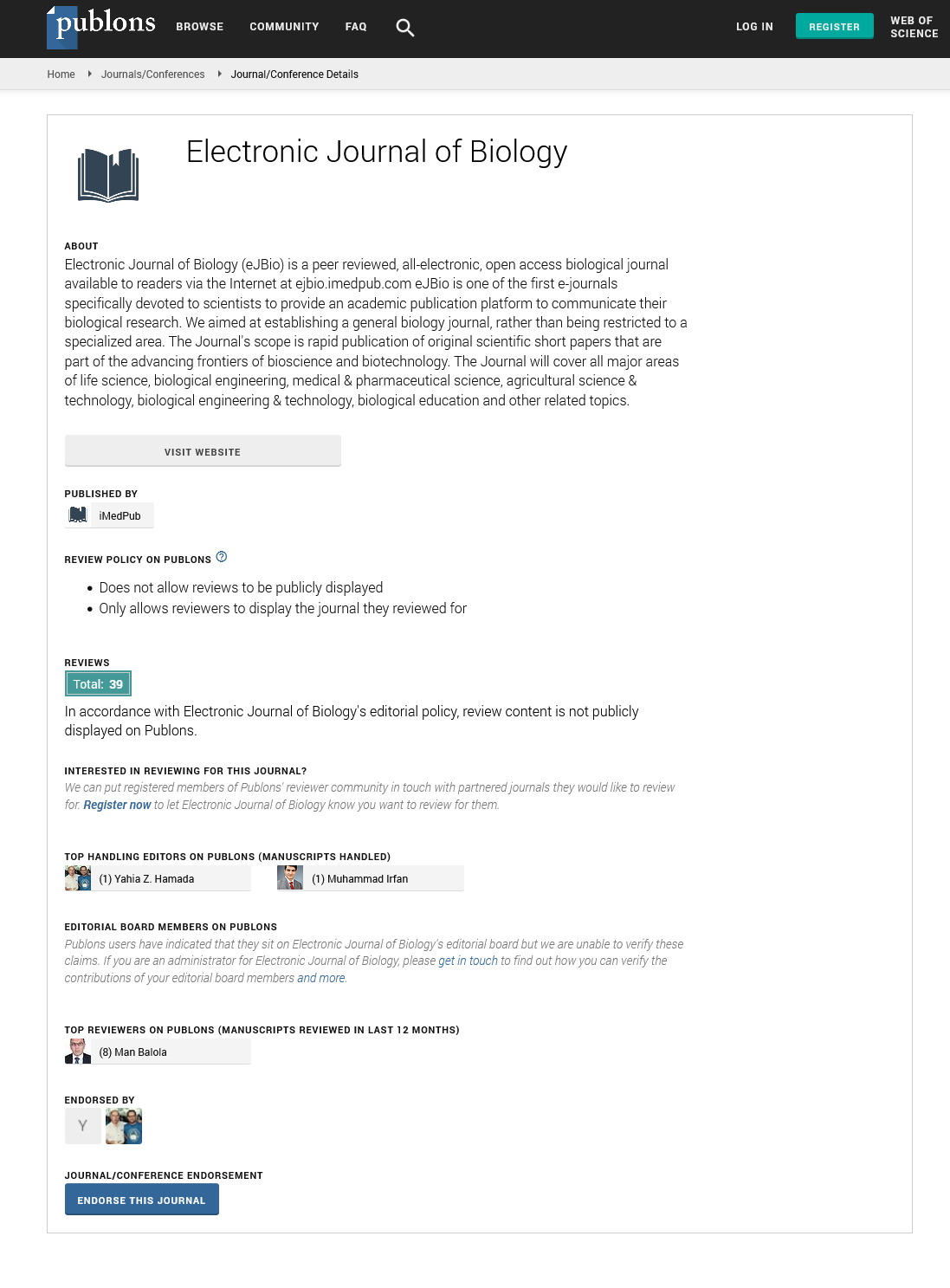Abstract
Aluminum Inhibition of ÃÆà ½Ãâñ-chymotrypsin, Acetyl Cholinesterase and Superoxide Dismutase shows a Link with Alzheimer Disease
Aluminum is present in all biospheres; it does not have any essential known function, although it had shown toxicity at high concentration towards laboratory animals, plants and humans. Its content is higher in brain patients with Alzheimer Disease (AD) and in people with renal failure. It is not clear if aluminum accumulation is a cause or consequence of AD. Due to aluminum had shown inhibition on enzymes present on human organism and these ones are related with symptoms and AD characteristic structures as neuritic plaques and neurofibrillary tangles, some studies were conducted with α-chymotrypsin, acetyl cholinesterase and superoxide dismutase enzymes. Michaelis Menten apparent constants (Kmapp) were calculated for the first-time trough Lineweaver Burke plots using screen carbon electrodes with immobilized α-chymotrypsin, acetyl cholinesterase and superoxide dismutase. Aluminum showed enzymatic inhibition at μmolar level. Competitive Kmapp increased with aluminum concentration confirming aluminum inhibition on tested enzymes. Main literature reviewed about selected enzymes, coupled with experimental evidence let us to conclude that, it is possible to set a link between these enzymes and Alzheimer disease. Three hypotheses established to explain toxic effect of metals are related with aluminum action on selected enzymes.
Author(s):
Miriam Barquero Quiros
Abstract | Full-Text | PDF
Share this

Google scholar citation report
Citations : 5001
Electronic Journal of Biology received 5001 citations as per google scholar report
Electronic Journal of Biology peer review process verified at publons
Abstracted/Indexed in
- Google Scholar
- China National Knowledge Infrastructure (CNKI)
- CiteFactor
- Electronic Journals Library
- Zoological Records
- WorldCat
- Proquest Summons
- Publons
- MIAR
- Openaccessarticles.com
- Secret Search Engine Labs
Open Access Journals
- Aquaculture & Veterinary Science
- Chemistry & Chemical Sciences
- Clinical Sciences
- Engineering
- General Science
- Genetics & Molecular Biology
- Health Care & Nursing
- Immunology & Microbiology
- Materials Science
- Mathematics & Physics
- Medical Sciences
- Neurology & Psychiatry
- Oncology & Cancer Science
- Pharmaceutical Sciences


